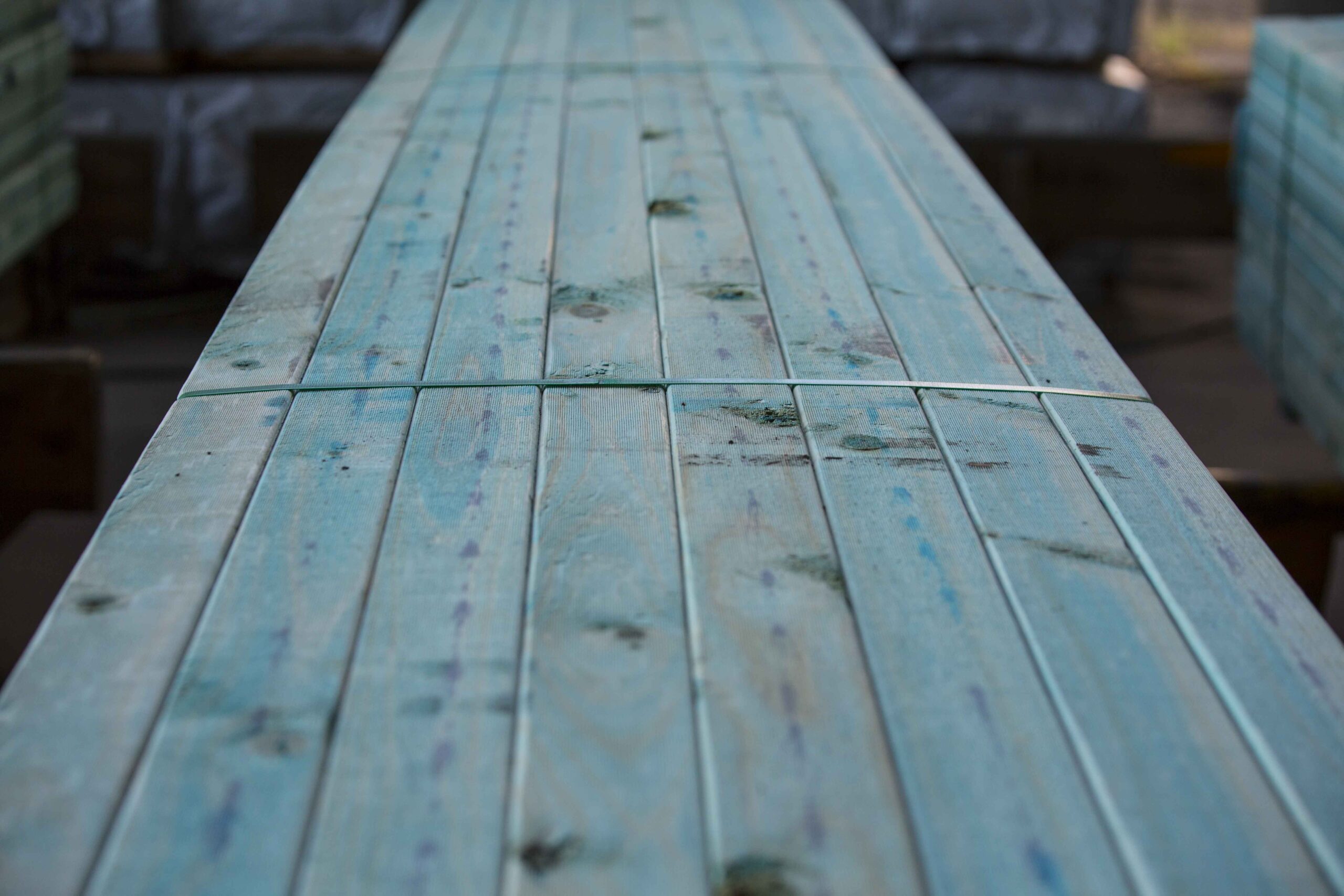Treatment Information

Timber Treatment
Treating our products increases their structural life and allows fast growing and environmentally sustainable plantation pine to be used in many more applications. Treatment has no effect on the timber’s strength or flammability.
We use different preservatives depending on what hazard the timber needs to be protected from. Our Timberlink Blue framing is treated to protect the timber from termite or borer attack, so plantation pine framing can be used in termite and borer risk areas.
We use different preservative formulations for our outdoor ranges as this timber needs to be protected from decay as well as termites and borers. The treatment is different depending on whether the timber will be used above ground or in contact with the ground.
Note that timber treatment does not protect against weathering. This greying of timber over time due to exposure to the sun and rain, can only be prevented by finishing the timber with a quality paint or stain and then maintaining it.
To ensure the timber’s treatment level is suitable for the application you have in mind, always check the hazard class table.
Hazard Class Table
The Hazard Class Table (from AS1604) below tells you the level of treatment needed (H level/class) for the timber to be protected from the hazards it will be exposed to in its application. You can use a higher level of treatment than the table states but never a lower number. A higher treatment level usually means more preservative has been applied to the timber and therefore the timber is likely to cost more.
| Hazard Level | Exposure | Hazard Conditions | Typical Uses | Suitable Timberlink Range |
| H2F | Inside | Borers and termites | Internal house framing South of the Tropic of Capricorn | Timberlink Blue |
| H3 | Outside, above ground | Moderate decay, Borers and termites | Outdoor framing – garages, pergolas, decking substructures, decking | Timberlink Green
Timberlink Decking |
| H4 | Outside, in-ground contact | Severe decay, Borers and termites | In-ground pergola and decking posts |
Identifying Treated Timber
You should always look for a treatment mark when purchasing treated timber. Not only does the brand give you detail about the treatment level and type, it is also an indication of quality, as by applying a treatment brand, the manufacturer is claiming it has been treated to Australian Standards.
A Good tip when building with treated timber is to keep or photograph the treatment tags as proof of where and how the timber was treated. You will need this info if you have any issues with the timber later on.
A treatment mark can be stamped on the timber, burnt into the timber or be on a tag attached to the end of the timber. It will always follow the same format as this is specified by an Australian Standard.
The mark consists of three groups of numbers/letters.
- The first three identify who treated the timber
- The next two digits are the preservative code telling you what preservative the timber has been treated with
- The final ‘H’ number indicates what level the timber has been treated to and therefore what applications it is suitable for
Any CCA treated timber sold in Australia, must also be marked as “Treated with Copper Chrome Arsenate”. This can appear on the treatment labels fixed to the ends of the timber or on the stamp branding along its length. For smaller end-section timber products, labelling individual pieces isn’t practical, the packaging must be labelled.
Is it Safe?
All timber preservatives used in Australia are approved by the Australian Pesticides and Veterinary Medicines Authority (APVMA) and approval is only granted to treatments that are effective and safe to use.
When treating timber, there are a series of Australian Standards that must be adhered to. These specify the concentration of a particular preservative and how deep it has to penetrate into the wood to protect it from the expected biological hazard to which it will be exposed as well as labelling requirements.
When working with any timber be it treated or not, we recommend following these safety tips:
-
- Wear gloves.
- Wear eye protection and a dust mask.
- Don’t burn. Off-cuts can be disposed of in landfill but check with local authorities.
All Timberlink Safety Data Sheets (SDS) can be downloaded here.